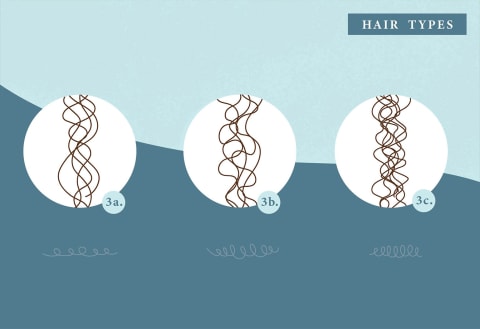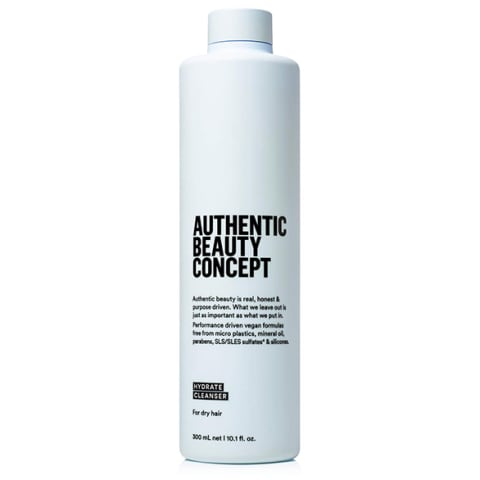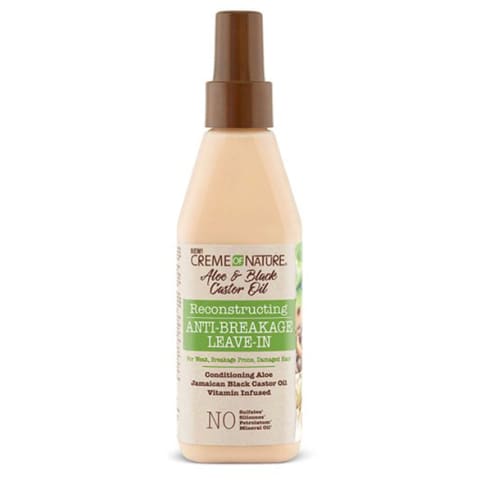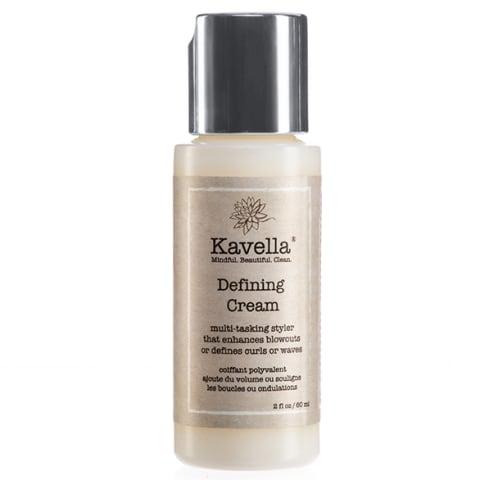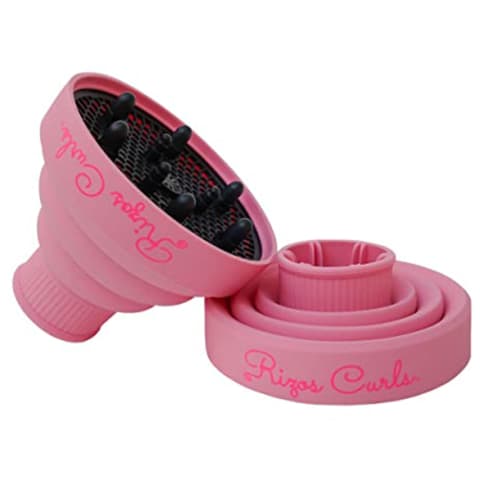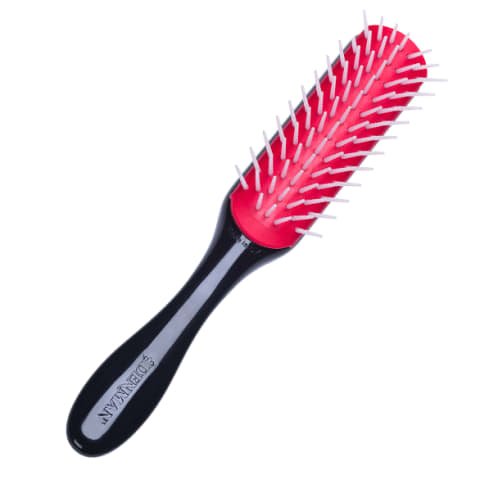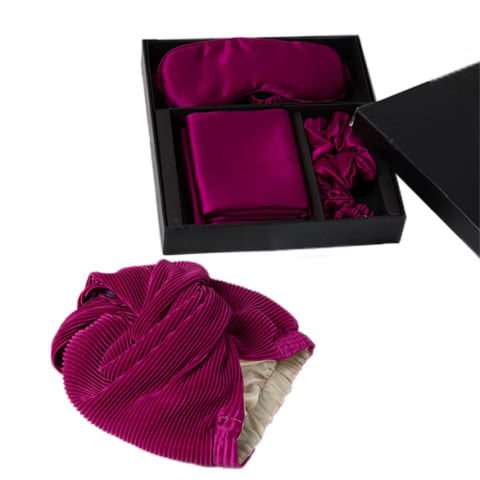Bad hair days don’t have to be frequent, and a good routine can make those days far and few between. From pineappling to make a fresh style last, to better understanding the chemistry behind your hair, whether you’re newly transitioning into the natural life or caring for someone with 3C hair, here’s everything you need to know to create the perfect curl-poppin’ 3C hair routine. Type 1 is exclusively straight hair. But type 2 through type 4 include wavy, curly, and coily (sometimes referred to as kinky-curly) textures, and each type is further divided into three additional subtypes (i.e., 2A, 2B, and 2C). For example, someone with MBL (mid-back-length) hair when stretched might look like they only have shoulder-length hair when it’s dry. It’s not uncommon for shrinkage to be measured in percentages. So, if someone says they have 50% shrinkage, that means that when dry, their hair looks only half as long as the actual length. However, this hair is often categorized as a classic corkscrew curl. While strict definitions say that this hair type has a curl circumference of a pencil or straw, this isn’t always accurate. Also, note that it’s incredibly common for Types 2 through 4 to have multiple wave or curl patterns throughout their hair. So, someone could mostly 3C but may have 3B at the front hairline or 4A at the nape. However, 3C hair tends to follow the same general care rules as most other natural hair types. Keep in mind that someone can be 3C but relax their hair. And while they’re still technically 3C, relaxers permanently alter your hair’s chemical composition. So, hair care tips for 3C naturals will be different from someone who’s relaxed with 3C hair. For this article, we’re focusing on natural heads only. While wavy and curly hair tends to struggle more with moisture than straight hair, a person’s porosity level can make that mission even harder. Patricia G. Williams, Creme of Nature brand educator, reminds us that “Knowing the porosity of your hair is as important as knowing your texture in selecting products for your hair care and styling regimen. Low or high porosity impacts what products work best on your texture.” There are three porosity levels: high, medium, and low. High porosity hair struggles to retain moisture which slips out of the hair shaft through fully open cuticles. Medium porosity has less of an issue with moisture retention as the hair’s cuticles are regularly aligned. Note that medium porosity hair is often referred to as “normal” because it retains moisture well. Similar to high porosity hair, low porosity hair also fights moisture issues because the hair cuticles are tightly aligned. This means that moisture can’t penetrate the hair shaft easily. If you’re wondering how to determine porosity, all you have to do is try this quick one-minute test. Wash frequency is going to depend on how much product you’re using when you’re styling your hair, and truthfully, your availability. But Evan Joseph, an advocate and curl stylist with Authentic Beauty Concept, recommends that 3C curlies wash their hair two to three times a week. “As long as you are using a naturally derived gentle cleanser, it won’t dry your curls out and will keep your hair and scalp clear—creating healthy scalp and curls!” For best results, you should make sure that your hair is fully saturated with product (detangler or even conditioner) that offers plenty of “slip.” That extra product ensures that knots or tangles will come out easier, and you’re less likely to pull your hair. Meanwhile, either opt for finger detangling or a good seamless wide-tooth comb to avoid creating additional tangles. And that translates to hair that doesn’t return to its original texture the next time you wash your hair. More importantly, this means that the only remedy is to cut the damaged hair. Avoid this heartache by prioritizing heatless styling methods and reaching for hot tools occasionally. If shrinkage is the bane of your existence, consider heatless methods for stretching hair such as using CurlFormers, flexible rods, or banding. While not everyone loves wash ’n’ go’s, Type 3 hair tends to yield consistent results with air-dried styles—especially if shrinkage isn’t as much of an issue for you. Properly moisturized hair tends to hold styles better, has a healthier overall appearance, and can ensure that wash days and styling sessions are less of a struggle. As a general rule, curly heads are encouraged to focus on products such as humectants that help to boost hydration. But don’t forget that water is the original moisturizer. Many curlies swear by creating a mix of water, aloe vera juice, and natural oils (i.e., coconut, or jojoba) to spritz their hair throughout the day. Also consider other long-term solutions such as the LOC (liquid, oil, cream) method when styling or GHE (greenhouse effect—but also known as baggying) to help boost hydration. Similarly, every time you reach for a hot tool, make sure you first use a good heat protectant. This will help to minimize the risk of heat damage. Likewise, don’t crank your hot tools to the highest setting. Unless you’re getting a silk press, there are very few reasons to set your hot tools to 450 degrees Fahrenheit. When using a flatiron, set the temperature to one that allows you to effectively straighten your hair in one pass. According to Biolage brand ambassador and celebrity hairstylist Sunnie Brook, “When you have split ends, what happens is the hair slowly splits up the shaft, which leads to breakage and slower growth.” And when it’s time to finally go in for a salon visit, you’ll need to chop—not trim—to prevent further damage. Had you trimmed regularly, you would have prevented those split ends from growing. Similarly, you may find that some routines are too tedious to maintain. Finding the right products can take some trial and error. So, consider the following recommendations as a starting point for your hair care routine journey. Concept Hydrate Cleansing Cleanser, Authentic Beauty ($28) Aloe and Black Castor Oil Reconstructing Anti-Breakage Leave-in, Cream of Nature ($10) Defining Cream, Kavella ($11) Curls Pink Collapsible Diffuser, Rizos ($29.99) D31 Freeflow Styler 7 Row Brush, Denman ($19.95) Imagination Silk Sleep Bundle, You Go Natural ($115) When opting for straighter styles, either utilize heatless methods such as Curl Formers or banding, to stretch the hair before you move to the styling step. And when you do turn to hot tools, always use the lowest heat setting possible and first prep your hair with a heat protectant. Similar to other naturals, you’ll have your pick of protective styles. Whether that’s wigs, weaves, braids, or crochet styles, don’t forget to care for the hair underneath. Avoid going longer than four to eight weeks with a protective style to reduce the risk of hair damage.


